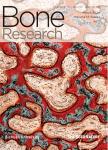Contemporary Approaches for Identifying Rare Bone Disease Causing Genes
Contemporary Approaches for Identifying Rare Bone Disease Causing Genes作者机构:Center for Public Health GenomicsUniversity of Virginia Departments of Public Health Sciences and Biochemistry and Molecular GeneticsUniversity of Virginia Department of Orthopaedic SurgeryJohns Hopkins School of Medicine Baltimore Veterans Administration Medical Center
出 版 物:《Bone Research》 (骨研究(英文版))
年 卷 期:2013年第1卷第4期
页 面:301-310页
核心收录:
学科分类:1002[医学-临床医学] 100210[医学-外科学(含:普外、骨外、泌尿外、胸心外、神外、整形、烧伤、野战外)] 10[医学]
主 题:exome sequencing genome sequencing bioinformatics osteogenesis imperfect pigment epithelium-derived factor (PEDF) bone restricted ifitm-like protein (Bril)
摘 要:Recent improvements in the speed and accuracy of DNA sequencing, together with increasingly sophisti- cated mathematical approaches for annotating gene networks, have revolutionized the field of human genetics and made these once time consuming approaches assessable to most investigators. In the field of bone research, a particularly active area of gene discovery has occurred in patients with rare bone disorders such as osteogenesis imperfecta (OI) that are caused by mutations in single genes. In this perspective, we highlight some of these technological advances and describe how they have been used to identify the genetic determinants underlying two previously unexplained cases of OI. The widespread availability of advanced methods for DNA sequencing and bioinformatics analysis can be expected to greatly facilitate identification of novel gene networks that normally function to control bone formation and maintenance.



